Showing Spotlights 281 - 288 of 556 in category All (newest first):
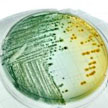 A bacterium which causes disease reacts to the antibiotics used as treatment by becoming resistant to them, sooner or later. This natural process of adaptation, antimicrobial resistance, means that the effective lifespan of antibiotics is limited. Unnecessary use and inappropriate use of antibiotics favors the emergence and spread of resistant bacteria. New research uses a graphene-based photothermal agent to trap and kill bacteria.
A bacterium which causes disease reacts to the antibiotics used as treatment by becoming resistant to them, sooner or later. This natural process of adaptation, antimicrobial resistance, means that the effective lifespan of antibiotics is limited. Unnecessary use and inappropriate use of antibiotics favors the emergence and spread of resistant bacteria. New research uses a graphene-based photothermal agent to trap and kill bacteria.
Feb 19th, 2013
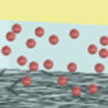 Carbon nanotubes, like the nervous cells of our brain, are excellent electrical signal conductors and can form intimate mechanical contacts with cellular membranes, thereby establishing a functional link to neuronal structures. There is a growing body of research on using nanomaterials in neural engineering. Carbon nanotube (CNT) synapse circuits are a first step in this direction. In new work, researchers at the University of California, Los Angeles, have developed a CNT synapse with the elementary dynamic logic, learning, and memory functions of a biological synapse.
Carbon nanotubes, like the nervous cells of our brain, are excellent electrical signal conductors and can form intimate mechanical contacts with cellular membranes, thereby establishing a functional link to neuronal structures. There is a growing body of research on using nanomaterials in neural engineering. Carbon nanotube (CNT) synapse circuits are a first step in this direction. In new work, researchers at the University of California, Los Angeles, have developed a CNT synapse with the elementary dynamic logic, learning, and memory functions of a biological synapse.
Feb 12th, 2013
 The majority of current commercial applications of nanotechnology to medicine is geared towards drug delivery to enable new modes of action, as well as better targeting and bioavailability of existing medicinal substances. While most reviews on nanomedicine tend to focus on specific sectors or take a very forward-looking stance and fail to provide a complete perspective on the current landscape, a new review article provides a more comprehensive and contemporary inventory of nanomedicine products.
The majority of current commercial applications of nanotechnology to medicine is geared towards drug delivery to enable new modes of action, as well as better targeting and bioavailability of existing medicinal substances. While most reviews on nanomedicine tend to focus on specific sectors or take a very forward-looking stance and fail to provide a complete perspective on the current landscape, a new review article provides a more comprehensive and contemporary inventory of nanomedicine products.
Jan 17th, 2013
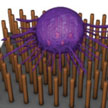 Metastasis - the process of cancer spreading from its original site to distant tissues - is caused by marauding tumor cells that break off from the primary tumor site and ride in the bloodstream to set up colonies in other parts of the body. Detecting and analyzing these circulating tumor cells (CTCs) can provide critical information for managing the spread of cancer and monitoring the effectiveness of therapies. In new work, researchers have created a Velcro-like platform which can not only capture CTCs with very high efficiency, but also release them in order to biochemically analyze them further.
Metastasis - the process of cancer spreading from its original site to distant tissues - is caused by marauding tumor cells that break off from the primary tumor site and ride in the bloodstream to set up colonies in other parts of the body. Detecting and analyzing these circulating tumor cells (CTCs) can provide critical information for managing the spread of cancer and monitoring the effectiveness of therapies. In new work, researchers have created a Velcro-like platform which can not only capture CTCs with very high efficiency, but also release them in order to biochemically analyze them further.
Jan 8th, 2013
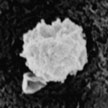 Nanotechnology is finding applications in the treatment of infectious and inflammatory diseases, particularly skin disease. These applications work in one of two ways: utilizing nanomaterials that have inherent antimicrobial properties; or incorporating known therapeutics into nanoscale vehicles to enhance delivery and improve efficacy. An ideal approach to develop a topical therapy for microbial infection in skin would combine both. Now, researchers have developed a new nanoparticle platform using chitosan for the treatment of inflammatory skin diseases such as Acne Vulgaris.
Nanotechnology is finding applications in the treatment of infectious and inflammatory diseases, particularly skin disease. These applications work in one of two ways: utilizing nanomaterials that have inherent antimicrobial properties; or incorporating known therapeutics into nanoscale vehicles to enhance delivery and improve efficacy. An ideal approach to develop a topical therapy for microbial infection in skin would combine both. Now, researchers have developed a new nanoparticle platform using chitosan for the treatment of inflammatory skin diseases such as Acne Vulgaris.
Jan 3rd, 2013
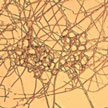 Naturally occurring nanomaterials can be found everywhere in nature - in soil, ground and surface waters, volcanic ash, ocean spray, mineral composites, smoke. Biogenic magnetite nanoparticles have even been discovered in various organisms, ranging from bacteria to human brains, with various biological functions. Researchers have discovered that nanoparticles produced by a flesh-eating fungus hold promise for stimulating the immune system and killing tumors.
Naturally occurring nanomaterials can be found everywhere in nature - in soil, ground and surface waters, volcanic ash, ocean spray, mineral composites, smoke. Biogenic magnetite nanoparticles have even been discovered in various organisms, ranging from bacteria to human brains, with various biological functions. Researchers have discovered that nanoparticles produced by a flesh-eating fungus hold promise for stimulating the immune system and killing tumors.
Dec 18th, 2012
 Nanotechnology-enabled bio-pharmaceuticals are the most innovative and highly specialized alternative medicines for curing chronic diseases. These functionally modified nanomaterials help in early detection of chronic diseases. In addition to this, they also detect the microorganisms and viruses associated with infections. In this article, the authors analyze the immense potential of nanotechnology in India's pharmaceutical and biotechnology industries.
Nanotechnology-enabled bio-pharmaceuticals are the most innovative and highly specialized alternative medicines for curing chronic diseases. These functionally modified nanomaterials help in early detection of chronic diseases. In addition to this, they also detect the microorganisms and viruses associated with infections. In this article, the authors analyze the immense potential of nanotechnology in India's pharmaceutical and biotechnology industries.
Dec 13th, 2012
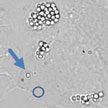 Researchers are very interested in investigating the biomechanical properties of the inner structure of cells due to their relevance in many important topics in biology such as intracellular and intercellular dynamics; tissue and organs formation and their homeostasis; but also in medicine as the formation and development of diseases like inflammatory disorders or tumor. In order to study inner cell properties, researchers have now presented a biophotonic holographic workstation that combines the complementary features of holographic optical tweezers (HOT) and self-interference digital holographic microscopy, in order to investigate biomechanics properties at the single cell level.
Researchers are very interested in investigating the biomechanical properties of the inner structure of cells due to their relevance in many important topics in biology such as intracellular and intercellular dynamics; tissue and organs formation and their homeostasis; but also in medicine as the formation and development of diseases like inflammatory disorders or tumor. In order to study inner cell properties, researchers have now presented a biophotonic holographic workstation that combines the complementary features of holographic optical tweezers (HOT) and self-interference digital holographic microscopy, in order to investigate biomechanics properties at the single cell level.
Dec 7th, 2012
 A bacterium which causes disease reacts to the antibiotics used as treatment by becoming resistant to them, sooner or later. This natural process of adaptation, antimicrobial resistance, means that the effective lifespan of antibiotics is limited. Unnecessary use and inappropriate use of antibiotics favors the emergence and spread of resistant bacteria. New research uses a graphene-based photothermal agent to trap and kill bacteria.
A bacterium which causes disease reacts to the antibiotics used as treatment by becoming resistant to them, sooner or later. This natural process of adaptation, antimicrobial resistance, means that the effective lifespan of antibiotics is limited. Unnecessary use and inappropriate use of antibiotics favors the emergence and spread of resistant bacteria. New research uses a graphene-based photothermal agent to trap and kill bacteria.
 Subscribe to our Nanotechnology Spotlight feed
Subscribe to our Nanotechnology Spotlight feed





